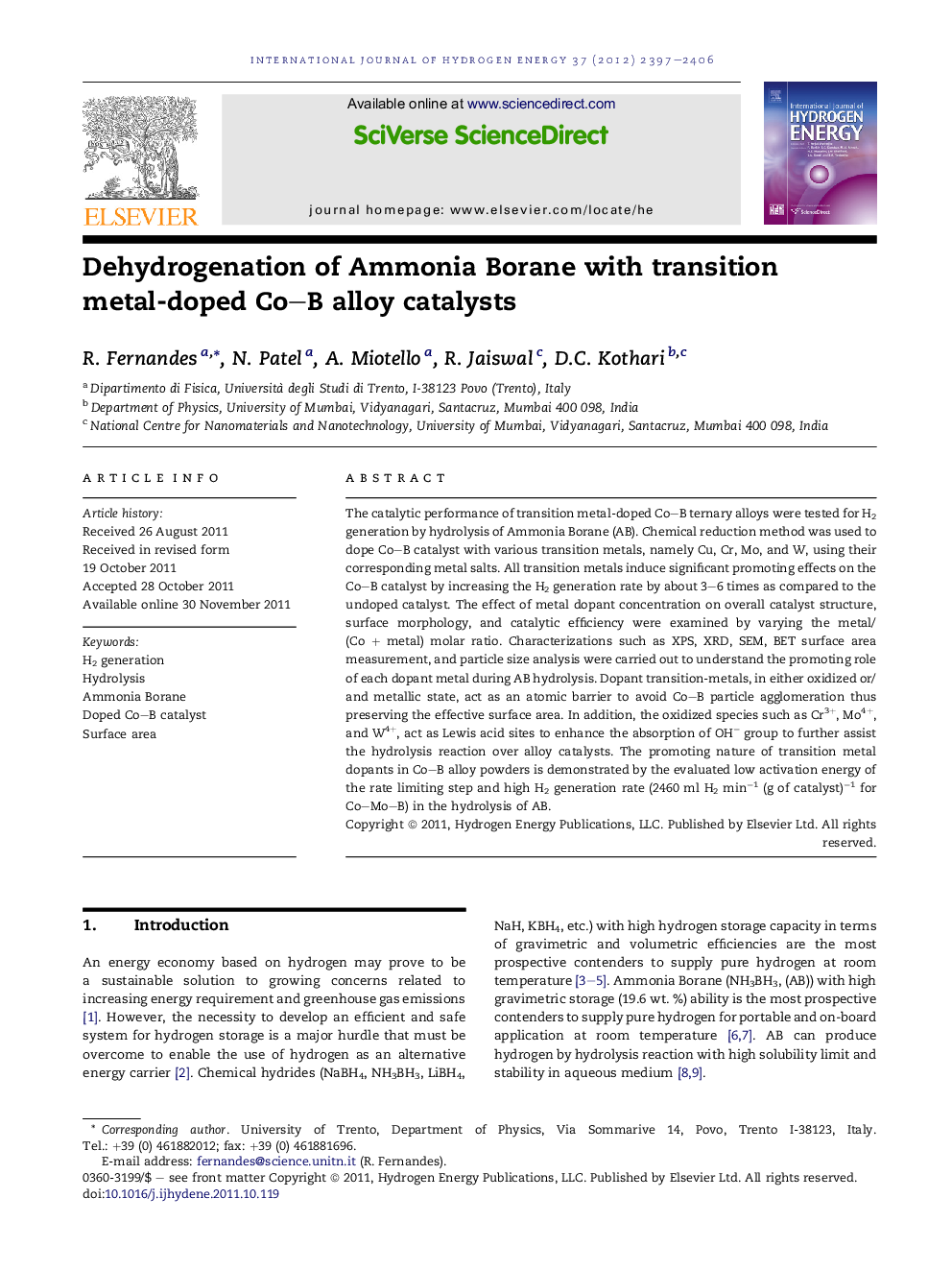| کد مقاله | کد نشریه | سال انتشار | مقاله انگلیسی | نسخه تمام متن |
|---|---|---|---|---|
| 1271660 | 1497566 | 2012 | 10 صفحه PDF | دانلود رایگان |

The catalytic performance of transition metal-doped Co–B ternary alloys were tested for H2 generation by hydrolysis of Ammonia Borane (AB). Chemical reduction method was used to dope Co–B catalyst with various transition metals, namely Cu, Cr, Mo, and W, using their corresponding metal salts. All transition metals induce significant promoting effects on the Co–B catalyst by increasing the H2 generation rate by about 3–6 times as compared to the undoped catalyst. The effect of metal dopant concentration on overall catalyst structure, surface morphology, and catalytic efficiency were examined by varying the metal/(Co + metal) molar ratio. Characterizations such as XPS, XRD, SEM, BET surface area measurement, and particle size analysis were carried out to understand the promoting role of each dopant metal during AB hydrolysis. Dopant transition-metals, in either oxidized or/and metallic state, act as an atomic barrier to avoid Co–B particle agglomeration thus preserving the effective surface area. In addition, the oxidized species such as Cr3+, Mo4+, and W4+, act as Lewis acid sites to enhance the absorption of OH− group to further assist the hydrolysis reaction over alloy catalysts. The promoting nature of transition metal dopants in Co–B alloy powders is demonstrated by the evaluated low activation energy of the rate limiting step and high H2 generation rate (2460 ml H2 min−1 (g of catalyst)−1 for Co–Mo–B) in the hydrolysis of AB.
► Transition metals, namely Cu, Cr, Mo, and W, were doped in Co–B catalyst.
► H2 generation rate increases up to 6 times compared to the undoped catalyst.
► Dopant metals act as an atomic barrier thus increasing the surface area.
► Oxidized species act as Lewis acid sites for better absorption of reactants.
Journal: International Journal of Hydrogen Energy - Volume 37, Issue 3, February 2012, Pages 2397–2406